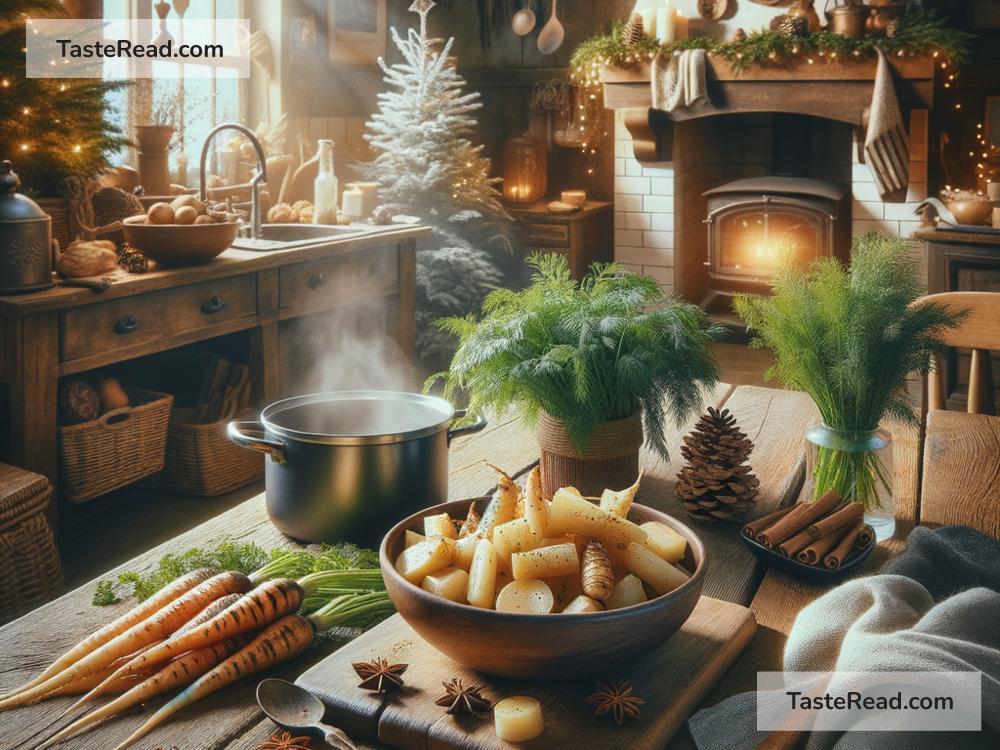The Surprising Link Between Parsnips and Winter Cooking
As the days grow shorter and the chilly winds of winter settle in, many of us crave warm, hearty meals to comfort us during the colder months. For centuries, winter cooking has revolved around staples like warming soups, roasted vegetables, and rich stews. One unlikely superstar in the world of winter food is the humble parsnip—a pale, root-shaped vegetable that surprisingly packs a punch when it comes to flavor and versatility. You may not immediately think of parsnips when planning a winter feast, but it’s high time they were given the spotlight they deserve.
What Are Parsnips?
Parsnips are root vegetables that look a bit like carrots but are pale cream in color. They belong to the same family as carrots and celery, and their history as a food dates back thousands of years. Parsnips were a staple food in Europe long before potatoes arrived there from the Americas. Because they grow well in cold climates and store easily over winter, they were a go-to ingredient for people during the snowy months.
What makes parsnips special is their flavor. While they can be slightly sweet like carrots, they also have a nutty, earthy taste that deepens as they’re cooked. During colder months, especially after the frost sets in, parsnips become sweeter as their starch turns into sugar. This natural sweetness makes them perfect for winter dishes, where hearty and comforting flavors are key.
Parsnips and Winter’s Culinary Traditions
Winter cooking isn’t just about filling bellies—it’s about warming souls. When temperatures drop, we instinctively reach for foods that make us feel cozy and satisfied. Parsnips fit perfectly into this seasonal approach to cooking.
Roasted parsnips, for instance, are a winter classic. Their edges crisp up beautifully in the oven, caramelizing into golden brown bites that deliver sweetness and a hint of nuttiness. Pair them with root vegetables like carrots, sweet potatoes, or turnips, and you’ve got a tray of warming goodness that’s perfect as a side dish or centerpiece.
Parsnips also shine in soups and stews. During winter, these dishes become staples in many households because they’re easy to make, packed with nutrients, and deeply satisfying. Parsnips add a creamy texture when blended, making them ideal for soups like parsnip and apple soup or curried parsnip soup. Their flavor enhances stews and casseroles, giving traditional recipes an unexpected twist.
Another surprising way to use parsnips is in mashed form. Mashed parsnips provide a slightly different experience from traditional mashed potatoes—they’re lighter but still rich in flavor. Add butter, cream, or even garlic for extra taste, and you’ll find yourself putting this side dish on repeat all winter long.
Why are Parsnips So Tied to Winter?
One of the main reasons parsnips have become linked to winter cooking is their seasonal nature. Parsnips thrive in colder weather and can survive frosty temperatures, which only enhance their sweetness. This adaptability has made them a traditional winter crop for centuries.
In earlier times, when food preservation methods were limited, people relied on foods that could be grown or stored during winter. Root vegetables like parsnips, potatoes, and carrots were ideal because they could last through the cold months without spoiling. Even today, despite modern grocery stores stocking vegetables year-round, parsnips remain deeply tied to winter traditions because they symbolize hearty, seasonal cooking.
From a nutritional standpoint, parsnips are a great winter food choice. They’re rich in fiber, vitamins, and minerals, particularly potassium, which supports heart health and muscle function. They’re also low in calories, making them a healthy yet filling ingredient in your winter meals.
Creative Ways to Use Parsnips This Winter
If you’re intrigued by the idea of using more parsnips in your winter cooking, there are countless ways to experiment:
-
Parsnip Fries: Cut parsnips into thin sticks, toss them with olive oil and spices, and roast them until crispy. They’re a great alternative to regular fries and make for a fun snack or side dish.
-
Parsnip Pie: Think of this as a winter twist on a sweet potato pie. Blend cooked parsnips with spices like cinnamon, nutmeg, and ginger, add eggs and cream, and bake it into a rich dessert.
-
Parsnip Risotto: Dice parsnips and add them to a creamy risotto for extra depth of flavor. Combine with cheese and herbs for an irresistible winter dinner.
-
Parsnip Chips: Use a mandoline slicer to create thin rounds of parsnip, fry or bake them, and season with salt. Perfect for snacking or adding crunch to salads and soups.
-
Parsnip Pancakes: Shred parsnips and combine them with eggs and a bit of flour to create batter for savory winter pancakes. Top with sour cream or applesauce for a seasonal treat.
Conclusion
When winter rolls around, your fridge and pantry deserve to be stocked with foods that celebrate the season—and parsnips belong at the top of the list. Versatile, flavorful, and packed with nutrition, these pale-colored root vegetables are far more than just a humble side dish. From roasted trays to creamy soups to sweet desserts, parsnips have earned their reputation as a winter cooking hero.
This winter, if you’re looking to refresh your menu with comforting and creative meals, don’t overlook the surprising charm of parsnips. Who knew such a simple vegetable could bring so much warmth and joy? Give them a try in your next kitchen creation—you might just find a new favorite!


